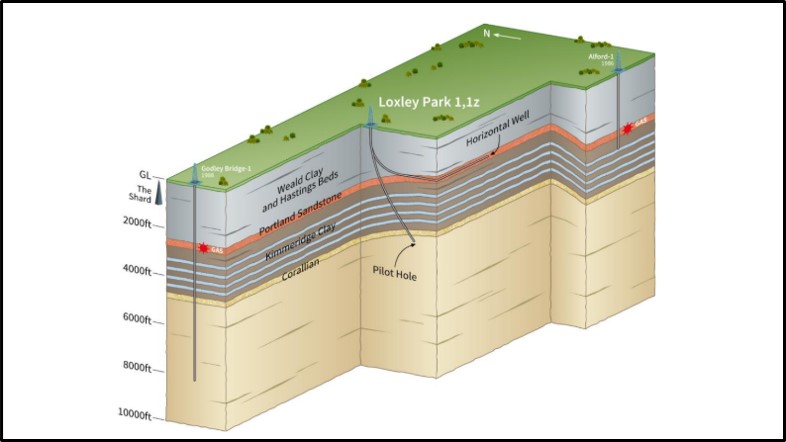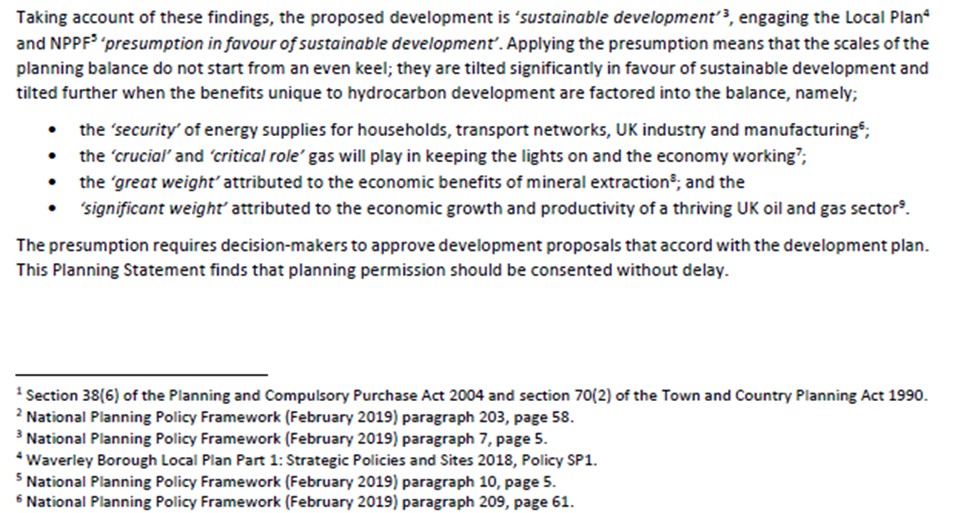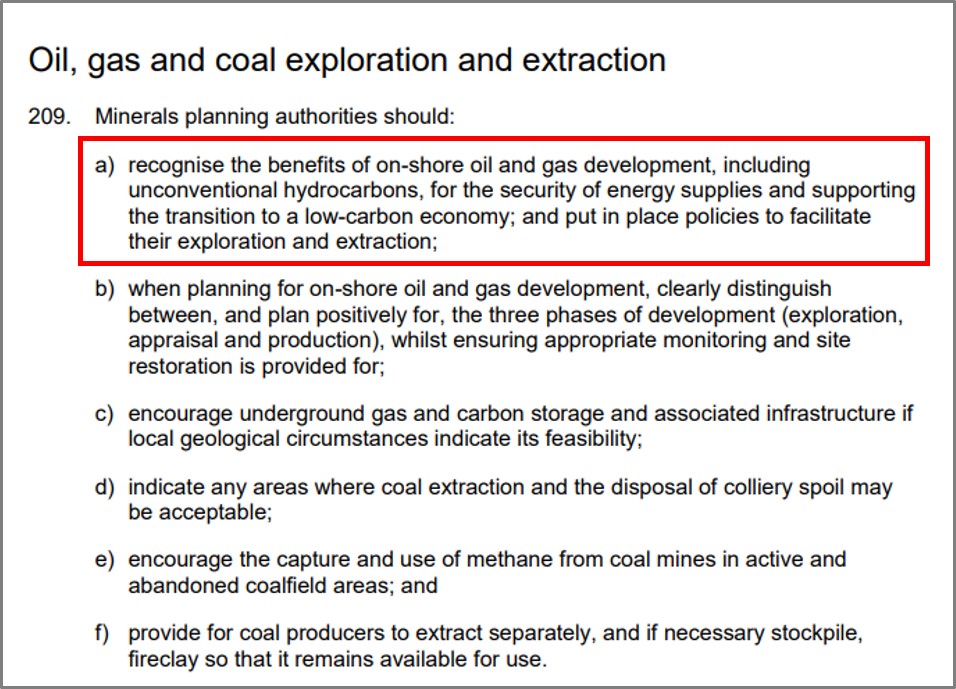
Proposed boreholes at Loxley near Dunsfold in Surrey. Source: UKOG planning application
Proposals to drill exploratory oil and gas wells near Dunsfold in Surrey have been published – but there are already calls for the application to be put on hold because of inconsistencies in the information.
The application, submitted by UK Oil & Gas plc (UKOG), comprised 85 documents.
Surrey County Council validated the application on 28 May 2019, which means officials were happy that the information was complete and in the correct format.
But DrillOrDrop understands that the council has been asked to suspend consideration of the application while the inconsistencies are addressed.
We asked UKOG and Surrey County Council to comment on the inconsistencies. The council said:
“The application was valid on 28 May 2019, when all the necessary paperwork was complete. The statutory period for determination is 13 weeks. However on such an application the determination period is likely to be extended during the consultation process when further information is required.
“We have not received any requests to suspend the determination of this application.”
Inconsistencies
Access track
Two maps submitted as part of the application show different routes for the access track.
Waste
The executive summary of the waste management plan (extract left) includes some identical paragraphs to the equivalent submitted for the application for long-term oil production at the Horse Hill site currently before the council (extract right).
One paragraph in both summaries refers to:
“the waste streams identified are consistent with those that were encountered during the original development, which consisted of well site construction, drill operations and well testing operations”.
But the Dunsfold proposal is on a greenfield site where no previous oil development has taken place. The planning statement says:
“The Site has no planning history; the land has an historic agricultural use”

Extract of planning statement for Dunsfold application.
National planning policy
The application’s planning statement refers three times to a paragraph in the National Planning Policy Framework (209a) which was struck out in March 2019 by a High Court judge.

Extract from Dunsfold application to onek of three references to the NPPF paragraph 209 on the benefits of onshore oil and gas
Mr Justice Dove ruled that the paragraph, which required councils to recognise the benefits of onshore oil and gas, was unlawful because of failings in a government consultation.

Last month, the local government secretary, James Brokenshire, acknowledged that paragraph 209(a) of the framework had been quashed.
Lorry route
The transport plan for the Dunsfold application states that vehicles coming to the proposed site from the south and west would follow the A272 from Petersfield to Billingshurst.
The plan does not mention that this would take heavy goods vehicles through the centres of Midhurst and Petworth.
The Petworth neighbourhood plan, approved by the South Downs National Park Authority in July 2018, said:
“the nature of the historic town centre makes it entirely unsuitable for heavy goods vehicles which continue to cause damage to buildings and measures are required to direct them elsewhere.”
Previous planning errors

Broadford Bridge drilling rig. Photo: DrillOrDrop
This is the second time that problems have been identified with a UKOG planning application.
In 2017, objectors criticised the quality of the application for exploratory drilling at Broadford Bridge in West Sussex.
The waste management plan for that site also referred incorrectly to the Horse Hill site.
There were inconsistencies between the waste management plan and the safety data sheet.
The health and safety management plan for Broadford Bridge said serious casualties resulting from an accident or emergency would go to Horsham Hospital – but there was no accident or emergency department at the hospital.
Key facts on the Dunsfold application
These details are from the UKOG application to Surrey County Council. There are currently no details on the opening or closing dates for a public consultation.
DrillOrDrop will follow the progress of the application through the planning system.
Council reference: SCC Ref 2019/0072
Date application submitted: 29 April 2019
Address: Land south of Dunsfold Road and east of High Loxley Road, Dunsfold Surrey
Name: Loxley well site
Proposal: Construction, operation, decommissioning, retention or restoration of well site, plus highway alterations and erection of boundary fence and entrance gates
Proposed duration: three years
Site size: 2.3ha, including well pad, access track and other ancillary development
Nearest settlements: The Green (1.2km); Dunsfold (1.4km), Loxhill (1.8km)
Area of High Archaeological Potential: Land to the north of the site, adjacent to Dunsfold Road.
Surrey Hills Area of Outstanding Natural Beauty and Green Belt: Land to the north of Dunsfold Road
Proposed development
Phase 1: Access and well site construction
- Highway improvement works at the junction of Dunsfold Road and High Loxley Road
- Construction of new junction with High Loxley Road, including 30m wide bell-mouth and passing place
- Installation of up to 1km of new compacted-stone access track
- Construction of compacted-stone well site with impermeable membrane
- Construction of perimeter surface runoff containment ditch
- Drilling cellar to accommodate conductor casing
- 5m security fencing, increasing to 4m along southern boundary, screened with netting alongside bridleway and High Billingshurst Farm
- 5m entrance gates
- Modular gate house
- Removal of 30-55mm of hedgerow
Staffing: 12 construction staff and 3-6 security staff
Deliveries: 7am-7pm Monday-Friday, 9am-1pm Saturdays. Maximum 2-way HGV movements: 10 per day
Duration: 14 weeks
Working hours: 7am-7pm Monday-Friday, 9am-1pm Saturdays
Phase 2: Drilling, testing and appraisal
- Mobilisation and demobilisation of surface plant and machinery
- Drilling one borehole (Loxley-1) and one sidetrack (Loxley-1z) using drilling rig up to 37m
- Temporary storage of drilling mud and rock cuttings for off-site disposal
- External lighting of rig mast, rig floor and ancillary equipment
- Delivery of fuels, equipment, chemicals, steel casing and tubing
- Short and extended well testing
Target formations: Portland sandstone Godley Bridge Gas discovery and deeper oil in the Kimmeridge limestones
Pilot well: Drilled to 4,750ft depth through Portland Sandstone and Kimmeridge Clay to Corallian Beds
Sidetrack well: Drilled at about 3,100ft depth into Portland Sandstone
Staffing: 20 personnel and 3-6 security staff
Maximum 2-way HGV movements: Mobilisations and drilling – 10 per day; testing – 5 per day; sidetrack drilling and maintenance workovers – 10 per day
Working hours: Mobilisation – 7am-7pm Monday-Friday, 9am-1pm Saturdays; drilling – 24 hours; testing – 7am-7pm Monday-Friday, 9am-1pm Saturdays; maintenance workovers – 24 hours
Duration: Mobilisation/demobilisation – 3 weeks; drilling pilot well – 12 weeks; testing mobilisation – 3 weeks; initial and extended testing – 26 weeks; sidetrack drilling – 12 weeks; maintenance workover – 4 weeks
Phase 3: Well plugging, abandonment and decommissioning
Removal of all surface equipment followed by well suspension or the plugging and abandonment of the well
Staffing: 12 personnel and 3-6 security staff
Deliveries: 7am-7pm Monday-Friday, 9am-1pm Saturdays. Maximum 2-way HGV movements: 10 per day for plugging and abandonment and 5 per day for removal of surface equipment
Working hours: Plugging and abandonment – 24 hours; removal of surface equipment – 7am-7pm Monday-Friday, 9am-1pm Saturdays
Duration: Plugging and abandonment – 3 weeks; removal of surface equipment – 2 weeks
Phase 4: Site retention or restoration
If the wells are considered commercially viable, a further application will be submitted to retain the site for longer-term production of hydrocarbons. Otherwise, the site will be restored to its original use.
Staffing: 6 personnel and 3-6 security staff
Deliveries and working hours: 7am-7pm Monday-Friday, 9am-1pm Saturdays. Maximum 2-way HGV movements: 10 per day for site restoration
Duration: Site restoration – 5 weeks; site retention – 26 weeks
Impacts
The planning application made the following conclusions on the effects of the development:
Impacts on landscape and trees: “negligible or minimal”
Risk to groundwater and flooding: “not significant” and could be made acceptable.
Ecological sites: No adverse effects
Greenhouse gases: Releases would be considered “insignificant” to the UK’s current and future budgets
Major accident or disaster: the site was “sufficiently remote from land-use hazards to render any risk unlikely and not major”.
Earthquakes: the site would “not contribute to a seismic event”
Traffic emissions: “neutral impact” on air quality, the company said.
Choice of site
UKOG said its site identification report concluded that the proposed site was the best environmental option and the most sustainable solution.
Planning policy
The planning statement concluded that the proposed development achieved “a high degree of compliance” with local planning policies. It also drew “strong support” from government policy, it said.
The document concluded:
“Planning permission should be consented without delay.”
Updated 4/6/2019 with statement from Surrey County Council
Categories: Regulation





Thank you Ruth for all your usual hard work and thoroughness for this examination of the UKOG planning application for Dunsfold in Surrey
Are we to believe that these multiple “inconsistencies” are just lazy incompetence on behalf of UKOG, and has hence been merely loosely cobbled together without care or concern for accuracy and relevance from other submissions, or are we to believe that this submission is deliberate derisory contempt for process and a waste of time?
I begin to wonder if the entire planning process is just some sort of joke to UKOG and others, and is not taken seriously for one second.
No wonder no one trusts the fossil fuel industry to do anything without these gross errors and inconsistencies, and how does that reflect on their entire organisation, such as it is?
No mention of Sunday working hours, a condition to not allow Sunday working was regularly breached at Broadford Bridge. Lorries turning the wrong way also observed.
Lorry turnig the wrong way… bloody hell disaster ;D
Tom. You may sneer at TMP’s but it was disastrous in February 2017, for the mother and her 5 month old baby when, early in the morning a concrete mixer crossed the carriageway and attempted to enter PNR the wrong way, in violation of the Traffic management plan at that time. Fortunately both were not seriously hurt but the car was a complete write off. Rules are there for a reason but companies like Cuadrilla seem to believe complying with them is optional.
All this and who knows what will come up at the next Horse Hill planning meeting which has had to be put back because of the number of objections AND UKOG weren’t prepared , Weald oilers taking a battering atm.
“Weald oilers”!!!
Careful Jono, you might be excommunicated. I thought the official line was there was no oil going to be extracted? That tank-er-ed now?
What excellent reporting. It’s a powerful piece.
“Planning permission should be consented without delay.
Well let’s hope planning is given without delay.
I’m all for UK onshore oil production, why import? ?
“Planning permission should be consented without delay.”
Ruth
Regarding your comments about a past HSE plan and the treatment of casualties from Broadford Bridge.
I noticed this at the time and examined the information on the permit. See the first comment.
https://drillordrop.com/2017/05/01/sussex-residents-urged-to-object-to-ukogs-oil-drilling-plans-at-broadford-bridge/
The information was that minor injuries would go to Horsham, if open.
Major injuries are dealt with by the ambulance and taken to whichever hospital they ( the ambulance ) decide to go to. It is not up to UKOG as to where they go.
It did not say that major injuries ( requiring an ambulance ) would go to Horsham as I remember.
However Horsham does have a minor injuries unit.
https://www.nhs.uk/Services/hospitals/Services/Service/DefaultView.aspx?id=339456
Hence my conclusion that the person making the accusation was incorrect, not seeming to understand the issue.
However, I note that you say the Health and Safety Management plan was defective. All I could see was the précis of that doc in the permit application, not the actual document itself. So, going on what the application noted, the Broadford Bridge ER plan was not incorrect, but the accusation of error was.
Well done UKOG!
Very lucky UKOG only looking for Oil and Gas and not for poisoning Rare Earth Elements used in renewable energy. isn´t it.